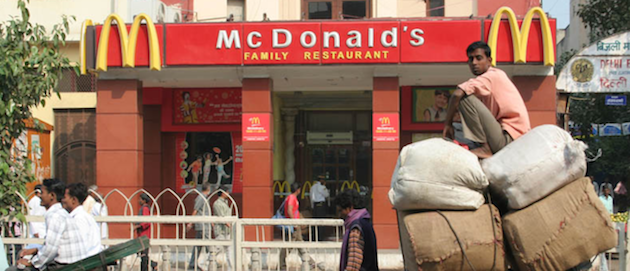As some of you probably surmised from the Neiman Marcus and Community Coffee Company posts, I have been studying brands and brand equity for the past few weeks. It is a fascinating concept that exists because of the interplay between basic economics and human psychology. Most of the time, brand equity changes slowly. More rarely, changes in brand equity happen rapidly, resulting in sudden ‘resets’ that can permanently alter a company’s fortunes. We are actually witnessing one of the biggest real-time changes in brand equity for a billion-dollar company in recent years, unfolding before our eyes, in the disastrous drop in brand value experienced by Chick-Fil-A over the past two to three weeks.*
[mainbodyad]A brand is a tool for the human brain, which is in many ways, lazy. Thinking requires a lot of metabolic expenditure. In the past, this was a luxury our ancestors didn’t have. The result? Conservation techniques became hardwired in subsequent generations through the process of natural selection. In one of the best books ever written, Influence: The Psychology of Persuasion, Dr. Robert Cialdini calls these automation programs “click-whirl responses”. It is best to think of click-whirl responses as default programs that run when faced with certain situations. In most cases, they are rational. In some cases, they can lead to disastrous consequences. The greater the stress, and the shorter the time period to make a decision, the higher the likelihood of a click-whirl response.
Brands play off of these click-whirl responses. Imagine you are in a foreign city, alone, surrounded by people speaking a different language, in a culture you do not understand. You are starving. You look up and see, in the distance, the giant McDonald’s logo. The golden arches beckon you. Why would you travel halfway around the world to eat the same quarter pounder with cheese, fries, and a Coke you could have experienced in Arkansas or Illinois? You know what you expect. The human brain needs to have some sense of certainty.

When in an unfamiliar environment, humans are wired to seek out familiarity and comfort. Brands offer one tool for doing that.
Now that you are hungry, you don’t have the luxury of feeling adventurous. Your body wants food. It wants to know what it is getting. Unless you have trained yourself otherwise, are a member of a group (people in groups tend to take more risk than individuals acting alone due to another set of mental models), or have a particular type of personality, you are going to make a direct line to the hamburger chain. Once there, you will probably feel a sense of relief and comfort due to the familiarity. I talked about my astonishment at witnessing the assortative self-selection at Walt Disney’s Epcot last year. People cannot help themselves.
Viewed in this light, we need to understand what brands are and how brand equity works. I’ll repeat my two parameters for understanding and thinking about brands and brand equity:
Joshua Kennon’s Definition of a Brand: Brand names are short-hand mental symbols that represent an experience, a flavor, a price point, a myriad of conscious and sub-conscious associations, and social status.
Joshua Kennon’s Primary Rule of Brand Equity: Brands must be kept simple, direct, focused, and consistent to have any meaning.
This is the reason messing with the brand equity of a company that is successful can be devastating to its long-term health. You must know what your brand represents; what people associate with it; and how you can convert those things into profit sitting in the company coffers.
[mainbodyad]Brands win when, all else equal, someone looking at two identical products in a store would go with the one that has the familiar brand. Then, you get this self-reinforcing effect where popularity begets more popularity. That is one of the major competitive advantages of having a great brand name. Much success in business results from these positive feedback loops.
Footnotes: * According to YouGov Brand Index, in the past few weeks, Chick-Fil-A- has experienced a 50% drop in the perception of its brand, as measured by feelings of frequent fast food eaters. If you are managing a business, that is catastrophic. The question that matters now: Is it permanent or can it be fixed? It will be interesting to see how it plays out in the free market.


